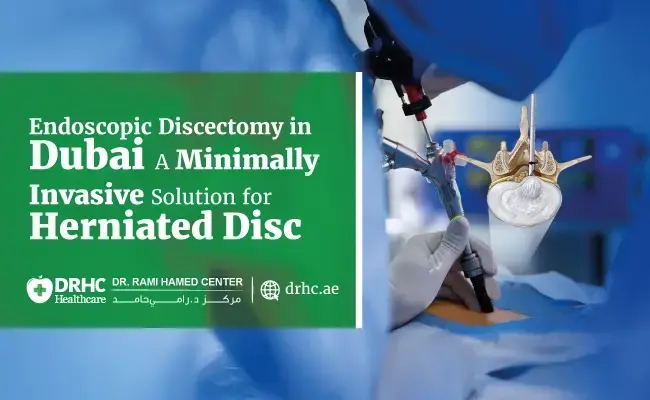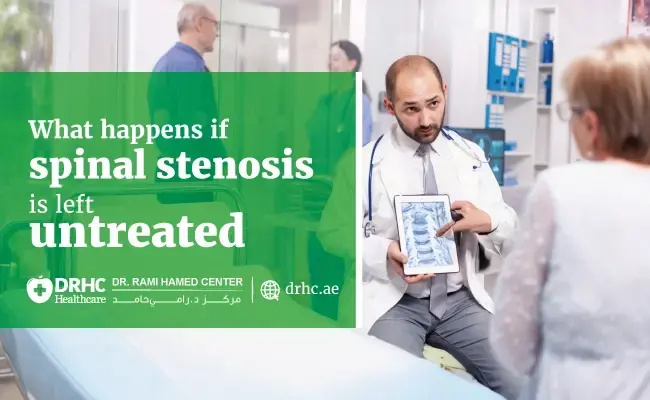
If you've been told you have a meniscus tear, you’re not alone. This common knee injury affects people of all ages—whether due to sports, sudden twists or simply wear and tear over time. Once diagnosed, you may be faced with two surgical options: meniscus repair or meniscectomy. Choosing the right treatment can feel overwhelming, especially when you're already dealing with knee pain and uncertainty.
At Dr. Rami Hamed Center (DRHC) in Dubai, we understand how important it is for you to feel confident and informed about your healthcare decisions. Let’s explore both procedures—clearly, compassionately, and with your peace of mind in focus.
What is the Meniscus, and Why Does it Matter?
The meniscus is a C-shaped piece of cartilage in your knee that acts like a cushion between the thigh bone (femur) and shinbone (tibia). It helps absorb shock, stabilize the joint, and ensure smooth movement.
A torn meniscus can cause symptoms like:
- Pain and swelling
- A clicking or popping sound
- Knee stiffness
- Difficulty bending or straightening the leg
- Feeling like the knee might "give way"
If non-surgical options like rest, physical therapy, or medications aren't enough, surgery may be recommended.
Meniscus Repair: Preserving What Matters
What is it?
Meniscus repair is a surgical procedure where the torn edges of the meniscus are stitched back together to allow natural healing. It’s typically performed using minimally invasive techniques (arthroscopy), which means smaller incisions and quicker recovery.
When is it recommended?
- For younger or active patients
- When the tear is in the outer edge of the meniscus (where there’s a good blood supply)
- When long-term joint preservation is a priority
Pros:
- Preserves more of your natural cartilage
- May lower the risk of arthritis later in life
- Ideal for active lifestyles and athletes
Things to consider:
- Longer recovery time (4–6 months) to allow proper healing
- Temporary limitations on movement or sports activity
- Not all tears are repairable
Meniscectomy: Quick Relief with Some Trade-Offs
What is it?
A meniscectomy involves trimming and removing the damaged portion of the meniscus. This can also be done arthroscopically and is generally a quicker procedure than a full repair.
When is it recommended?
- When the tear is in an area with poor blood flow (inner part of the meniscus)
- When the meniscus is severely frayed or degenerative
- For patients needing a faster return to daily function
Pros:
- Shorter recovery period (around 4–6 weeks)
- Effective pain relief and quick return to normal activities
- Suitable for older adults or low-demand lifestyles
Things to consider:
- Less cartilage means less cushioning for the joint
- Slightly higher risk of developing arthritis over time
- Not always ideal for younger or athletic patients
Our Related Blogs:
- Grinding Sensation in Your Knee? Cartilage Damage May Need Arthroscopy
- Painful Kneecap? Patellar Misalignment Can Be Treated with Arthroscopy
- Chronic Knee Pain Despite Rest? Arthroscopy Can Diagnose & Treat the issue
- Stiff Knee After Injury? Scar Tissue Might Require Arthroscopic Cleanup
- Can't Squat Without Pain? Meniscus Tears Often Respond Well to Arthroscopy
- What Is a Meniscus Tear? Causes, Symptoms, and Treatment Options
- Types of Meniscus Tears: Which One Do You Have?
Common Questions About Meniscus Surgery
Will the surgery be painful?
While any surgery involves some discomfort, modern techniques and anesthesia make both meniscus repair and meniscectomy relatively low-pain procedures. At DRHC Dubai, we use minimally invasive approaches and provide effective pain management to ensure a smooth experience.
How long is the recovery?
- Meniscus Repair: You may need crutches and a knee brace for several weeks, followed by a structured rehab program. Full recovery can take 4–6 months.
- Meniscectomy: You can usually walk within a few days and resume normal activities within a month.
Are there non-surgical alternatives?
Yes, for minor or stable tears, conservative treatments like physiotherapy, anti-inflammatory medications, and activity modification can help. However, if the tear interferes with daily life or doesn’t improve, surgery might be the best option.
Choosing the Right Option for You
Your age, activity level, type and location of the tear, and long-term goals all play a role in deciding between meniscus repair and meniscectomy. At DRHC Dubai, our orthopedic specialists take the time to assess your unique situation and guide you toward the most effective and safest solution.
We understand that the idea of surgery can be intimidating—but with the right information, expert care, and support, you’re not facing it alone.
Expert Knee Care at DRHC Dubai
If you’re experiencing knee pain or have been diagnosed with a meniscus tear, we invite you to schedule a consultation at Dr. Rami Hamed Center in Dubai. Our experienced orthopedic surgeons are here to help you understand your options, answer your questions, and support you every step of the way—so you can get back to living life with confidence and comfort.
Call +97142798200 us now to schedule your consultation today!
Visit our Spine Center at DRHC Dubai – Located in Dubai Healthcare City
Topic: orthopedic Knee




.jpg)




Leave a comment